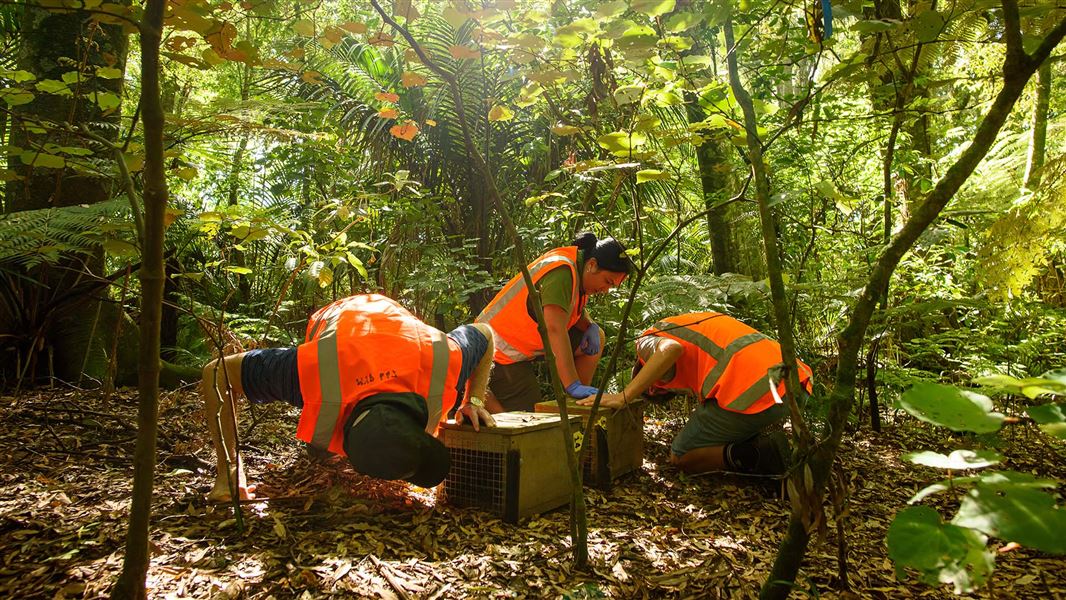Background
New Zealand’s nature is special and unique but in serious trouble. Each year, approximately 25 million native birds are killed by introduced predators. Introduced possums, rats, stoats, ferrets and weasels wreak havoc in our forests, backyards, and communities.
Predator Free 2050 is an ambitious, nationwide goal to eradicate our most harmful predators from all of New Zealand. This will allow native plants and animals to thrive alongside us.
It’s time to review our strategy to make New Zealand Predator Free by 2050. We want to know what you think about the proposed goals, our proposal to stick with the current target predator species for the next five years (2025-2030), and the support you need to keep up your predator free work.
Looking back 2020–2025
In the last five years, PF2050 has focused on the research and development necessary to enable national eradication, as well as mobilising community support. Many conservation groups, agencies and sectors have rallied together with great success in many parts of the country. Together, we’ve raised awareness, developed smart eradication tools and techniques and communities have done the hard work on the ground and grown support along the way.
Looking forward 2025–2030
We need to keep the momentum up, with the help of communities and all the incredibly hard-working organisations that are a part of this.
In our next five-year strategy, we’re focusing on these four things:
- Mobilise for action: Inspire New Zealanders and empower communities to take action.
- Maintain the gains: Continue essential predator control to create safe spaces for native species and improve biodiversity outcomes.
- Innovate for eradication: Advance tools and techniques to eradicate predators in rural, urban and conservation areas.
- Prepare to accelerate: Develop a clear, evidence-based plan to achieve the PF2050 goal. That plan will show the benefits for New Zealand and will attract the funding required to achieve it.
Discussion document
To help us craft the next phase of the strategy, we're asking New Zealanders to share what they think.
We want to hear from you about these things in particular:
- The new 2030 goals to focus our work on the right things and measure our progress.
- The proposal to stick with the current list of predator species to target for eradication.
- The support you need to keep up your predator free work.
Predator Free 2050 strategy review discussion document (PDF, 2,100K)
Supporting documents
- An analysis of potential target species for Predator Free 2050 (PDF, 1,500K)
- A report on the role of fences and sanctuaries in the Predator Free 2050 goal (PDF, 1,500)
Learn more about Predator Free 2050, including resources and reports.
What happens next
We will listen to, analyse and summarise all your feedback, and share a report of what we heard. We will consider your input to draft a refreshed PF2050 Strategy (2025-2030) that the Government will consider in late 2025.
Other important plans for nature
We also sought feedback on the New Zealand Biodiversity Strategy implementation plan.
Implementing New Zealand’s Biodiversity Strategy 2025-2030 public consultation
